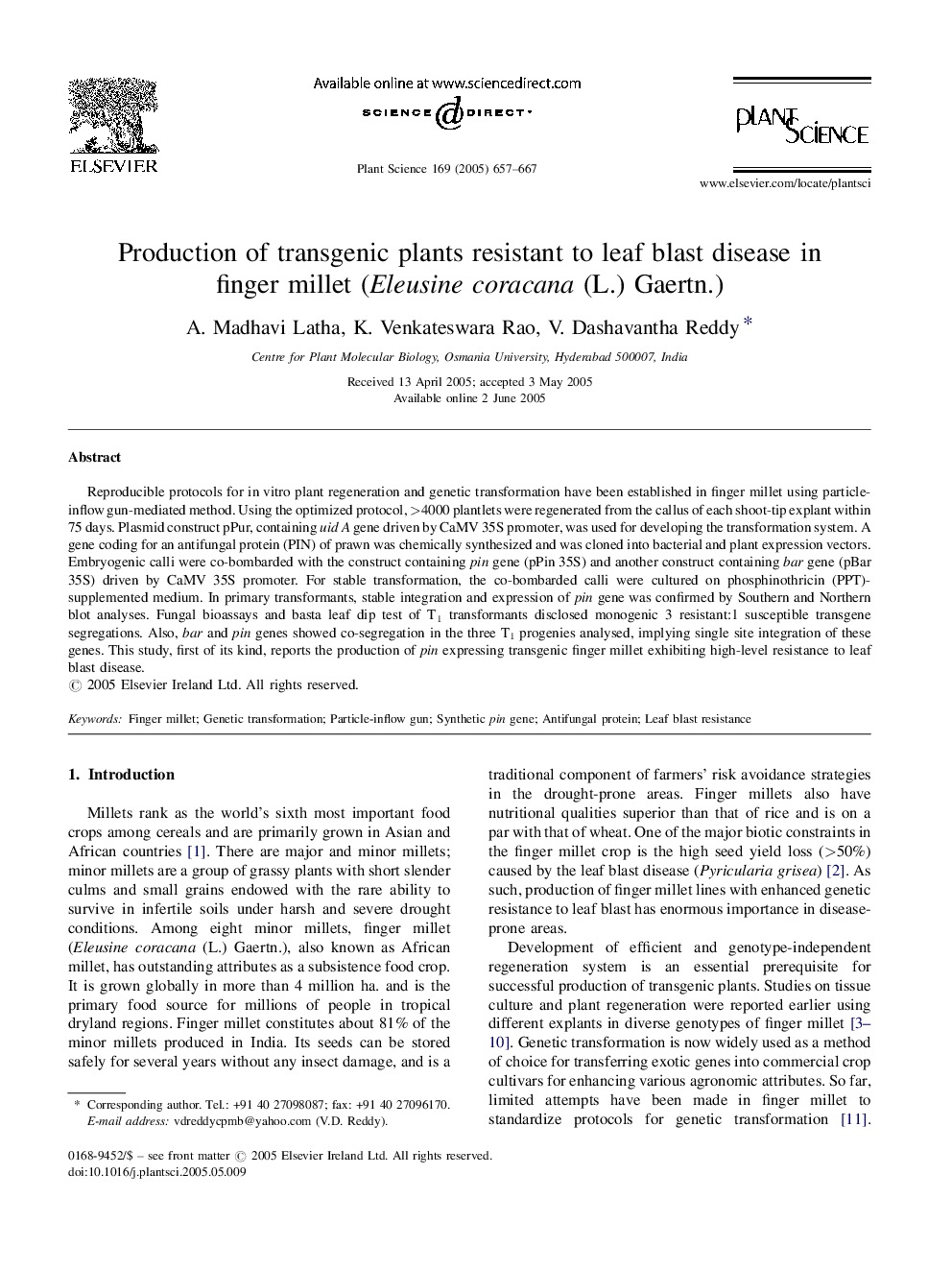| Article ID | Journal | Published Year | Pages | File Type |
|---|---|---|---|---|
| 10841827 | Plant Science | 2005 | 11 Pages |
Abstract
Reproducible protocols for in vitro plant regeneration and genetic transformation have been established in finger millet using particle-inflow gun-mediated method. Using the optimized protocol, >4000 plantlets were regenerated from the callus of each shoot-tip explant within 75 days. Plasmid construct pPur, containing uid A gene driven by CaMV 35S promoter, was used for developing the transformation system. A gene coding for an antifungal protein (PIN) of prawn was chemically synthesized and was cloned into bacterial and plant expression vectors. Embryogenic calli were co-bombarded with the construct containing pin gene (pPin 35S) and another construct containing bar gene (pBar 35S) driven by CaMV 35S promoter. For stable transformation, the co-bombarded calli were cultured on phosphinothricin (PPT)-supplemented medium. In primary transformants, stable integration and expression of pin gene was confirmed by Southern and Northern blot analyses. Fungal bioassays and basta leaf dip test of T1 transformants disclosed monogenic 3 resistant:1 susceptible transgene segregations. Also, bar and pin genes showed co-segregation in the three T1 progenies analysed, implying single site integration of these genes. This study, first of its kind, reports the production of pin expressing transgenic finger millet exhibiting high-level resistance to leaf blast disease.
Related Topics
Life Sciences
Agricultural and Biological Sciences
Plant Science
Authors
A. Madhavi Latha, K. Venkateswara Rao, V. Dashavantha Reddy,
